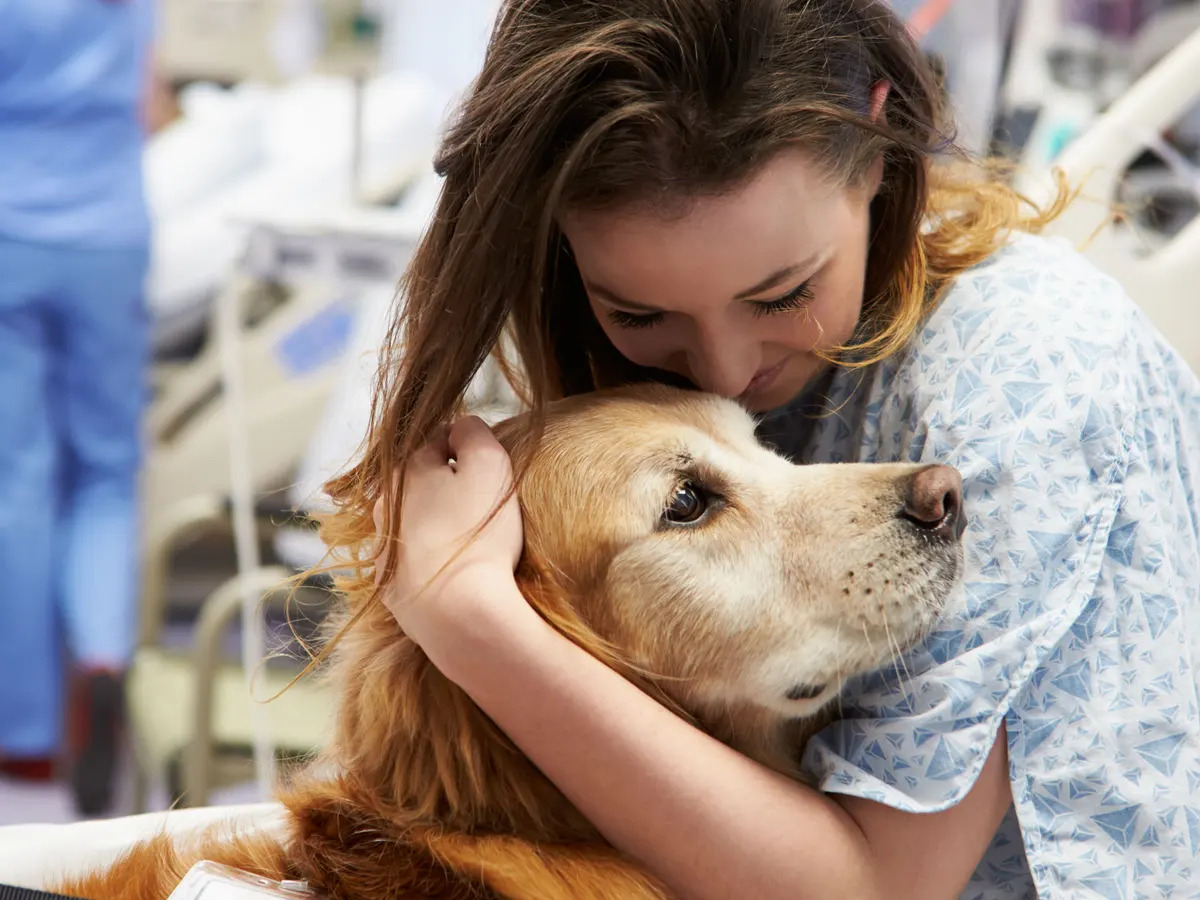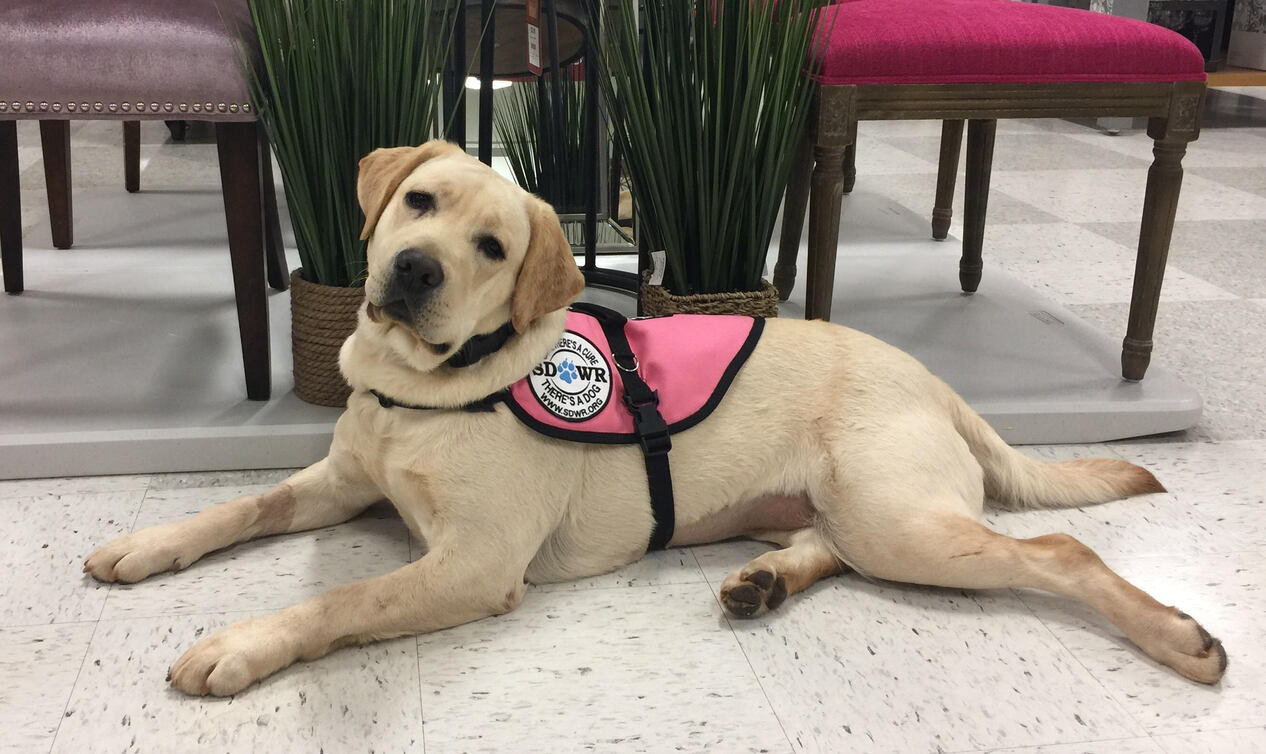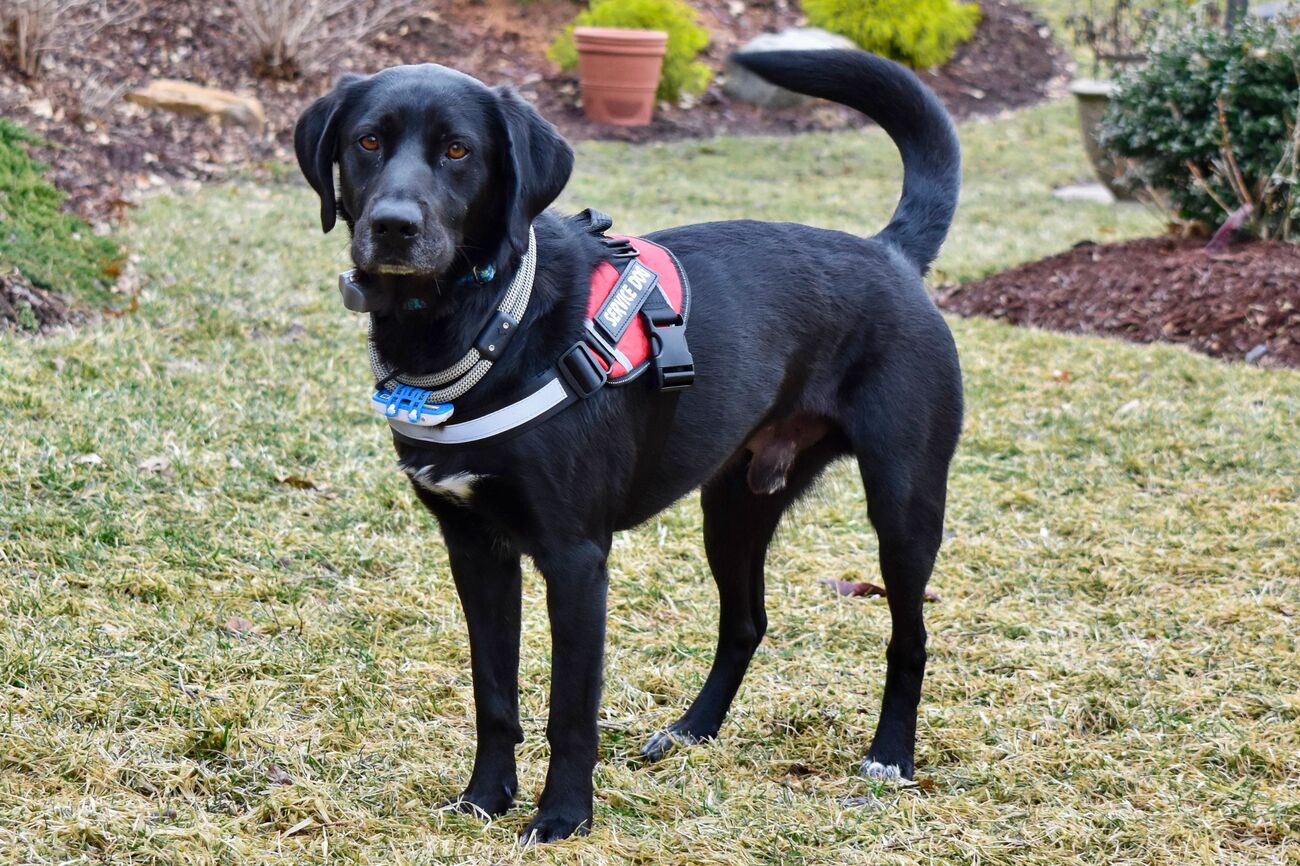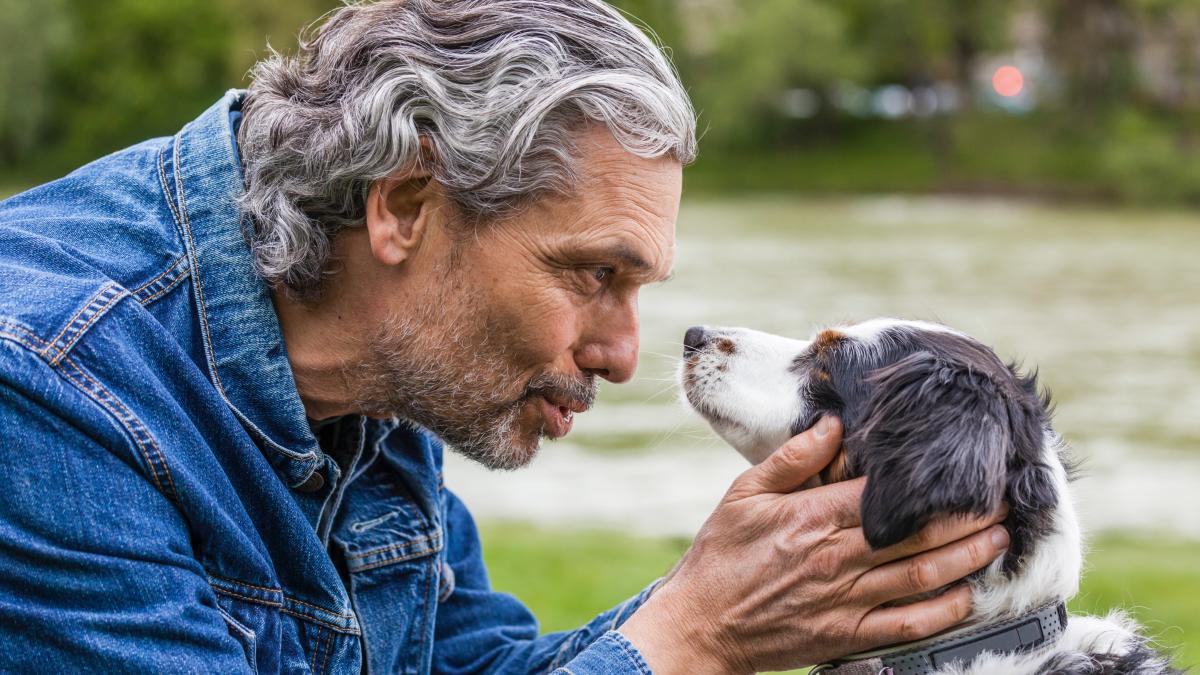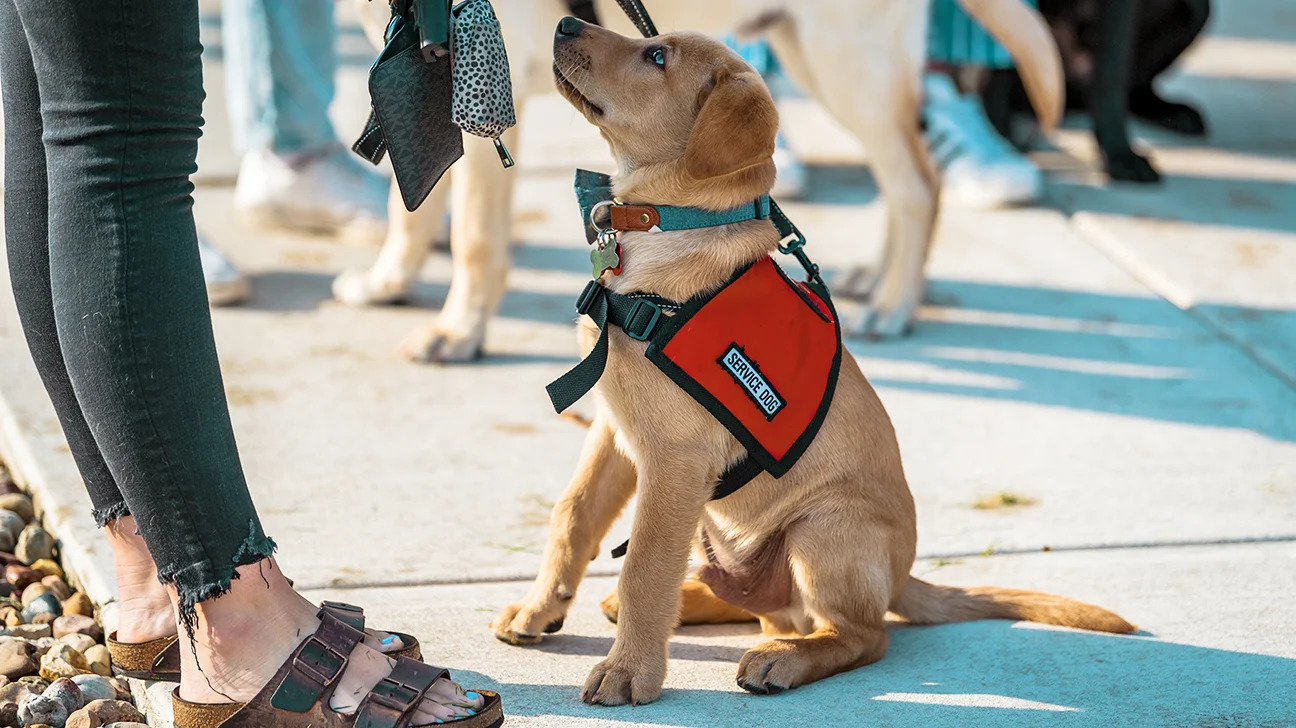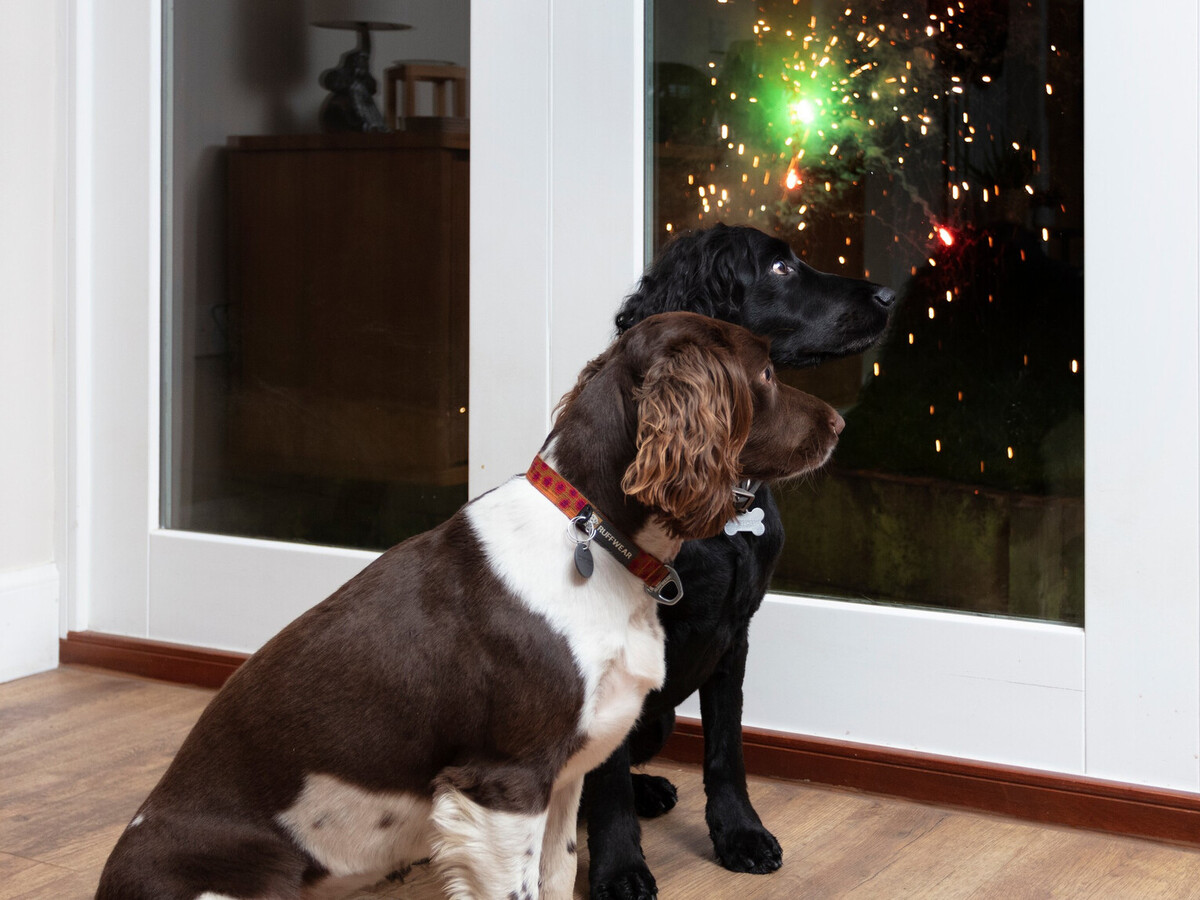Home>Health & Wellness>Behavior & Cognitive Care>How To Train My Dog To Be A Service Dog For Anxiety
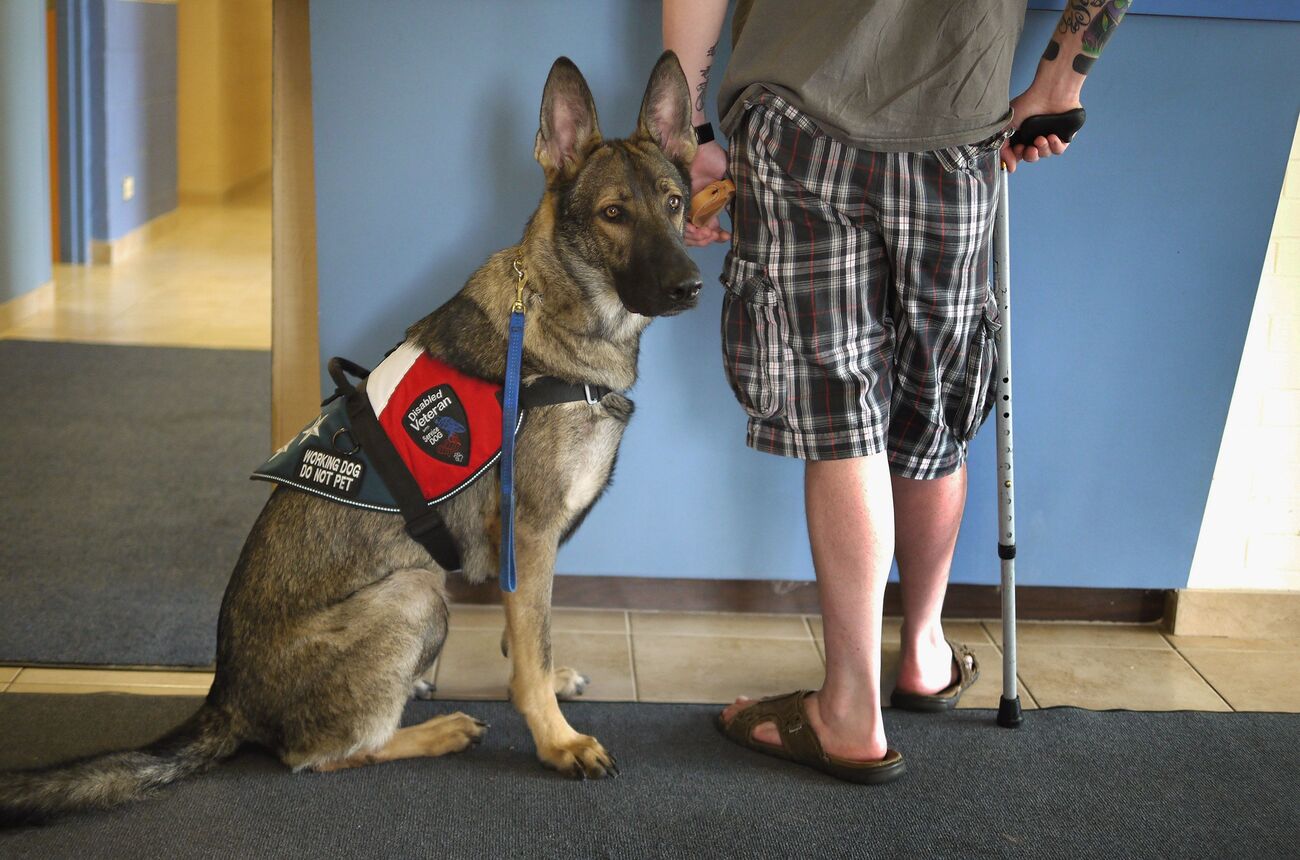

Behavior & Cognitive Care
How To Train My Dog To Be A Service Dog For Anxiety
Modified: February 21, 2024
Learn how to train your dog to be a service dog for anxiety with behavior and cognitive care techniques. Discover effective methods for supporting your dog's training and well-being.
(Many of the links in this article redirect to a specific reviewed product. Your purchase of these products through affiliate links helps to generate commission for Pawsomeoldies.com, at no extra cost. Learn more)
Table of Contents
- Introduction
- Understanding the Role of a Service Dog for Anxiety
- Assessing Your Dog's Suitability for Service Dog Training
- Basic Obedience Training for Service Dog Candidates
- Advanced Training for Service Dog Tasks
- Public Access Training for Service Dogs
- Legal Considerations for Service Dog Owners
- Conclusion
Introduction
Training a dog to be a service dog for anxiety is a noble and impactful endeavor. Service dogs play a crucial role in providing support and assistance to individuals dealing with anxiety disorders. These specially trained canines offer not only practical aid but also emotional comfort, helping their handlers navigate daily challenges with greater ease and confidence.
The process of training a service dog for anxiety involves a combination of behavioral conditioning, obedience training, and specialized task instruction. It requires patience, dedication, and a deep understanding of both canine behavior and the unique needs of individuals coping with anxiety.
In this comprehensive guide, we will delve into the essential aspects of preparing a dog for service work, specifically tailored to address anxiety-related needs. From assessing your dog's suitability for service training to mastering advanced tasks and navigating legal considerations, this resource aims to provide a thorough understanding of the journey toward creating a reliable and supportive service dog.
By exploring the intricacies of service dog training for anxiety, we hope to equip you with the knowledge and insights necessary to embark on this transformative process. Whether you are a dog owner considering training your own pet or a professional seeking to expand your expertise, this guide will serve as a valuable companion in your pursuit of enhancing the lives of individuals grappling with anxiety disorders through the power of well-trained service dogs.
Read more: How To Get A VA Service Dog For Anxiety
Understanding the Role of a Service Dog for Anxiety
Service dogs for anxiety play a pivotal role in providing invaluable support to individuals grappling with anxiety disorders. These remarkable canines are trained to offer a sense of security, comfort, and assistance to their handlers, contributing to a significant improvement in their overall well-being. Understanding the multifaceted role of a service dog for anxiety involves recognizing the diverse ways in which these specially trained animals positively impact the lives of those they serve.
Emotional Support and Comfort
One of the primary functions of a service dog for anxiety is to provide emotional support and comfort to individuals facing the challenges of anxiety disorders. These dogs are adept at recognizing signs of distress and responding with calming behaviors, such as nuzzling, leaning, or providing gentle pressure through body contact. By offering a constant source of companionship and reassurance, service dogs help alleviate feelings of isolation and distress, fostering a sense of emotional stability for their handlers.
Alerting and Intervention
Service dogs for anxiety are trained to detect subtle changes in their handler's behavior and emotional state, allowing them to intervene proactively. Through keen observation and specialized training, these dogs can recognize signs of anxiety escalation and employ specific techniques to divert their handler's focus, such as nudging, pawing, or providing tactile stimulation. By interrupting patterns of anxiety and offering redirection, service dogs play a crucial role in preventing and mitigating the impact of anxiety episodes.
Physical Assistance
In addition to addressing emotional and psychological needs, service dogs for anxiety are often trained to provide physical assistance to their handlers. This may include tasks such as guiding their handler to a safe or quiet space during moments of distress, retrieving medication or comfort items, and even summoning help in emergency situations. By offering practical aid and enhancing their handler's sense of autonomy, these dogs contribute to a tangible improvement in daily functioning and self-reliance.
Social Facilitation
Service dogs for anxiety serve as powerful facilitators of social interaction and engagement for their handlers. By virtue of their presence and approachable demeanor, these dogs help alleviate social barriers and stigma associated with anxiety disorders, fostering a sense of inclusion and acceptance in various settings. Their calming influence and non-judgmental companionship often empower individuals to navigate social environments with increased confidence and ease.
In essence, the role of a service dog for anxiety transcends traditional notions of pet companionship, encompassing a dynamic and purposeful partnership aimed at enhancing the quality of life for individuals grappling with anxiety disorders. Through their unwavering support, intuitive responsiveness, and multifaceted assistance, these remarkable animals embody the transformative potential of the human-canine bond in the realm of mental health support.
Assessing Your Dog's Suitability for Service Dog Training
Assessing your dog's suitability for service dog training is a critical initial step in embarking on the journey of preparing a canine companion to provide support for individuals dealing with anxiety disorders. While the innate potential for service work varies among dogs, certain fundamental traits and characteristics can serve as indicators of a dog's aptitude for this specialized role.
Temperament and Disposition
The temperament and disposition of a dog form the cornerstone of its suitability for service dog training. Dogs destined for service work, particularly in the context of anxiety support, should exhibit traits such as calmness, attentiveness, and a natural inclination towards providing comfort and reassurance. A dog with a gentle and empathetic demeanor, coupled with an inherent ability to remain composed in various environments, is more likely to thrive in the demanding role of an anxiety support service dog.
Trainability and Focus
The trainability and focus of a dog are pivotal factors in determining its suitability for service dog training. Dogs that display a willingness to learn, a strong capacity for focus, and an eagerness to respond to commands and cues are better equipped for the rigorous training regimen essential for service work. The ability to maintain attention, follow instructions reliably, and exhibit consistent responsiveness to training exercises are indicative of a dog's potential to excel in the specialized tasks associated with anxiety support service dog roles.
Sensitivity and Empathy
Sensitivity and empathy are qualities that significantly influence a dog's effectiveness in providing support for individuals with anxiety disorders. Dogs capable of intuitively sensing changes in their handler's emotional state, demonstrating empathy through comforting behaviors, and exhibiting a natural inclination to alleviate distress are well-suited for the nuanced demands of anxiety support service dog roles. The ability to establish a deep emotional connection and offer genuine solace through non-verbal communication is a hallmark of a dog with the potential to excel in the realm of anxiety support service work.
Physical Health and Stamina
The physical health and stamina of a dog are essential considerations in evaluating its suitability for service dog training. Dogs destined for anxiety support service roles must possess robust physical health, endurance, and agility to navigate various environments and execute tasks effectively. A dog with sound physical condition, resilience, and the capacity to sustain prolonged periods of focused activity is better equipped to meet the demands inherent in providing consistent and reliable support to individuals managing anxiety disorders.
Social Compatibility and Adaptability
The social compatibility and adaptability of a dog are crucial aspects to consider when assessing its suitability for service dog training. Dogs destined for anxiety support service roles should exhibit a natural ease in interacting with diverse individuals, animals, and environments. A dog that demonstrates adaptability, sociability, and a capacity to remain composed in the face of novel stimuli and social dynamics is better positioned to function as a reliable and unobtrusive presence in the lives of individuals navigating anxiety-related challenges.
In summary, the process of assessing a dog's suitability for service dog training involves a comprehensive evaluation of its temperament, trainability, sensitivity, physical capabilities, and social adaptability. By carefully considering these fundamental attributes, dog owners and trainers can make informed decisions regarding the selection and preparation of canine candidates for the vital role of providing support and assistance to individuals coping with anxiety disorders.
Basic Obedience Training for Service Dog Candidates
Basic obedience training forms the foundational framework upon which the specialized skills and tasks of a service dog for anxiety are built. This phase of training focuses on instilling fundamental behaviors, commands, and manners essential for a service dog to function reliably and effectively in various environments while providing support to individuals managing anxiety disorders.
Establishing Core Commands
The initial stage of basic obedience training involves establishing core commands that serve as the building blocks for a service dog's responsive behavior. Commands such as "sit," "stay," "come," "heel," and "down" are introduced and reinforced through consistent repetition, positive reinforcement, and gradual progression. These commands form the basis of a service dog's ability to maintain focus, exhibit self-control, and respond promptly to their handler's cues, laying the groundwork for advanced task training.
Leash Etiquette and Socialization
Leash etiquette and socialization play a pivotal role in shaping a service dog candidate's behavior and demeanor in public settings. Training exercises focus on acclimating the dog to walking calmly on a leash, maintaining appropriate proximity to their handler, and exhibiting polite interactions with people and other animals. Exposure to diverse social environments, including busy streets, public spaces, and communal settings, helps cultivate a service dog's confidence, adaptability, and composure amidst varying stimuli.
Distraction Management and Focus
Service dog candidates undergo training aimed at developing resilience against distractions and maintaining unwavering focus on their handler's commands and cues. Exercises involving controlled exposure to environmental stimuli, auditory distractions, and unpredictable scenarios help fortify the dog's ability to remain attentive and responsive in the presence of potential triggers. Through positive reinforcement and gradual desensitization, service dogs learn to prioritize their handler's directives while exhibiting composure in the face of external disturbances.
Polite Greetings and Interactions
Polite greetings and interactions form an integral part of a service dog's basic obedience training, emphasizing the importance of exhibiting courteous behavior in social encounters. Training focuses on teaching the dog to greet individuals and other animals calmly, refrain from jumping or excessive excitement, and maintain a composed and approachable demeanor. These skills are essential for fostering positive interactions and promoting the service dog's role as a reliable and unobtrusive presence in diverse social settings.
Reinforcement of Positive Behavior
Throughout the basic obedience training phase, emphasis is placed on reinforcing positive behavior through praise, rewards, and consistent encouragement. By associating desired behaviors with positive outcomes, service dog candidates develop a strong motivation to exhibit obedience, attentiveness, and responsiveness. This reinforcement-based approach not only cultivates a harmonious bond between the dog and their handler but also lays the groundwork for the successful integration of advanced training tasks tailored to address anxiety-related support needs.
In essence, basic obedience training serves as the cornerstone of a service dog candidate's preparation for the multifaceted role of providing support to individuals grappling with anxiety disorders. By instilling core commands, promoting social etiquette, fostering focus amidst distractions, and reinforcing positive behavior, this foundational training phase equips service dog candidates with the essential skills and demeanor necessary to embark on the subsequent stages of specialized task training and public access preparation.
Advanced Training for Service Dog Tasks
Advanced training for service dog tasks represents a pivotal phase in the comprehensive preparation of a canine companion to fulfill the specialized support needs of individuals grappling with anxiety disorders. This stage of training focuses on equipping service dogs with a diverse repertoire of skills and tasks tailored to address the nuanced challenges and requirements of anxiety support roles.
Task Customization and Specialized Skills
The advanced training phase involves customizing task training to align with the specific needs and triggers experienced by individuals with anxiety disorders. Service dogs are trained to perform tasks such as deep pressure therapy, where they apply gentle pressure to their handler's body to provide a calming effect during moments of distress. Additionally, dogs may be taught to create physical barriers by positioning themselves between their handler and potential sources of anxiety, offering a sense of protection and reassurance.
Scent Recognition and Alerting
An integral aspect of advanced training for anxiety support service dogs involves scent recognition and alerting. Dogs are trained to detect subtle changes in their handler's scent, breathing patterns, or physiological cues indicative of an impending anxiety episode. Upon recognizing these signals, the dog is taught to provide a specific alert, such as nudging or making physical contact, to prompt their handler to engage in coping strategies or seek a safe environment.
Read more: What Does A Service Dog Do For Anxiety?
Grounding and Anchoring Techniques
Service dogs undergo training to execute grounding and anchoring techniques designed to mitigate the impact of anxiety episodes. These techniques may involve the dog applying gentle pressure through leaning or body contact, serving as a stabilizing presence to help their handler regain a sense of grounding and stability during moments of heightened anxiety. Through consistent practice and reinforcement, service dogs develop the ability to provide tangible support and comfort in response to their handler's emotional needs.
Task Sequencing and Integration
Advanced training encompasses the integration and sequencing of multiple tasks to create a cohesive support framework. Service dogs learn to execute task sequences tailored to their handler's unique anxiety triggers and coping strategies. This may involve a combination of alerting to emerging anxiety, providing physical comfort and support, and guiding their handler to a designated safe space, thereby offering a comprehensive and personalized response to anxiety-related challenges.
Public Access Proficiency
In addition to specialized task training, advanced training for anxiety support service dogs emphasizes public access proficiency. Dogs undergo rigorous preparation to navigate various public settings, including crowded spaces, transportation, and communal environments, while maintaining focus on their handler and exhibiting unobtrusive and composed behavior. This aspect of training ensures that service dogs can accompany their handlers seamlessly and provide consistent support in diverse real-world scenarios.
In essence, advanced training for service dog tasks represents a dynamic and specialized phase aimed at equipping canine companions with the diverse skills and sensitivities necessary to fulfill the intricate support needs of individuals managing anxiety disorders. Through the cultivation of customized tasks, scent recognition, grounding techniques, task integration, and public access proficiency, service dogs emerge as steadfast allies in providing tailored and impactful assistance to their handlers within the complex landscape of anxiety-related challenges.
Public Access Training for Service Dogs
Public access training constitutes a crucial component of preparing service dogs to fulfill their supportive roles in real-world environments, particularly in the context of providing assistance to individuals managing anxiety disorders. This specialized training phase focuses on acclimating service dogs to navigate diverse public settings with composure, attentiveness, and adherence to established behavioral standards, thereby ensuring their seamless integration into the daily lives of their handlers.
The training encompasses exposure to a wide array of public environments, including bustling urban areas, commercial establishments, public transportation, and communal spaces. Through systematic desensitization and positive reinforcement, service dogs are familiarized with navigating through crowds, maneuvering through confined spaces, and maintaining focus on their handler amidst varying levels of environmental stimuli. This exposure serves to cultivate the dog's adaptability, resilience, and capacity to remain composed in the face of dynamic and potentially challenging public scenarios.
A fundamental aspect of public access training involves reinforcing the service dog's adherence to established etiquette and behavioral guidelines. This includes maintaining a calm and unobtrusive demeanor, refraining from soliciting attention from strangers, and exhibiting polite and controlled interactions with people and other animals. By instilling these behavioral standards, service dogs become adept at blending seamlessly into public settings while prioritizing their handler's needs and maintaining a non-intrusive presence.
Furthermore, public access training emphasizes the development of reliable responses to various situational cues and commands encountered in public environments. Service dogs are trained to exhibit consistent leash manners, maintain appropriate proximity to their handler, and respond promptly to directional cues amidst distractions. Additionally, they learn to navigate obstacles, negotiate entry and exit points, and adapt to the dynamics of public transportation, thereby ensuring their capacity to accompany their handlers with confidence and poise.
Crucially, public access training also encompasses the cultivation of the service dog's capacity to remain attentive and responsive to their handler's emotional and physiological cues in public settings. This heightened sensitivity enables the dog to proactively detect signs of anxiety or distress in their handler and provide tailored support, such as initiating grounding techniques, offering physical comfort, or guiding their handler to a designated safe space within the public domain.
In essence, public access training equips service dogs with the essential skills, demeanor, and adaptability necessary to accompany their handlers seamlessly in diverse public environments while providing unobtrusive yet impactful support. By honing their ability to navigate public spaces with composure, adhere to established behavioral standards, and remain attuned to their handler's needs, service dogs emerge as steadfast and reliable companions in the journey of individuals managing anxiety disorders.
Read more: How To House Train A Senior Dog
Legal Considerations for Service Dog Owners
Legal considerations hold significant importance for individuals who own or are training a service dog for anxiety support. Understanding the rights, responsibilities, and protections afforded to service dog owners is essential for navigating various public and private settings while ensuring the well-being and accessibility of both the service dog and its handler.
Federal and State Laws
Service dog owners benefit from legal protections established under federal and state laws. The Americans with Disabilities Act (ADA) defines the rights of individuals with disabilities to be accompanied by their service dogs in public places, including restaurants, stores, and transportation facilities. This legislation mandates that service dogs are permitted to accompany their handlers in these locations, irrespective of any pet-related restrictions or policies.
Additionally, state laws may offer supplementary provisions and protections for service dog owners, encompassing areas such as housing, employment, and access to public accommodations. Familiarizing oneself with the specific regulations governing service dog ownership within the relevant state or jurisdiction is crucial for ensuring comprehensive legal compliance and safeguarding the rights of both the service dog and its handler.
Public Access Rights
Service dog owners are entitled to exercise their public access rights, allowing their trained service dog to accompany them in various public settings. It is imperative for service dog owners to be well-versed in the specific guidelines and limitations pertaining to public access, ensuring that their service dog is permitted entry into establishments and facilities where the general public is granted access.
Understanding the nuances of public access rights empowers service dog owners to advocate for their legal entitlements while fostering a harmonious and informed relationship with proprietors, employees, and the general public. This knowledge serves as a cornerstone for promoting the accessibility and inclusion of individuals with anxiety disorders who rely on the support of their service dogs in navigating public spaces.
Accommodation in Housing
Service dog owners are afforded legal protections concerning accommodation in housing settings. The Fair Housing Act (FHA) prohibits discrimination against individuals with disabilities, including those who rely on service dogs for assistance. This legislation mandates that individuals with disabilities have the right to reside with their service dogs in housing units, even in locations with pet-related restrictions or prohibitions.
Service dog owners should be cognizant of their rights under the FHA and understand the procedures for requesting reasonable accommodations in housing settings. By leveraging these legal protections, service dog owners can ensure the seamless integration of their service dog into their residential environment, fostering a supportive and inclusive living arrangement that aligns with their unique needs.
Read more: How To Help My Dog Overcome Noise Anxiety
Advocacy and Education
In addition to understanding their legal rights and protections, service dog owners play a pivotal role in advocating for the rights of individuals with disabilities and promoting public awareness of service dog-related legislation. By engaging in educational initiatives and advocacy efforts, service dog owners contribute to the broader discourse surrounding disability rights, accessibility, and the vital role of service dogs in enhancing the quality of life for individuals managing anxiety disorders.
Furthermore, service dog owners can collaborate with advocacy organizations, legal resources, and community stakeholders to foster a supportive and informed environment conducive to the respectful and equitable treatment of service dog teams. Through proactive engagement and education, service dog owners contribute to the cultivation of a more inclusive and accommodating societal landscape for individuals relying on the invaluable support of their service dogs.
In essence, legal considerations for service dog owners encompass a multifaceted framework of rights, responsibilities, and advocacy efforts aimed at promoting the accessibility, inclusion, and well-being of individuals with anxiety disorders who rely on the support of their service dogs. By navigating federal and state laws, exercising public access rights, securing housing accommodations, and engaging in advocacy endeavors, service dog owners play a pivotal role in upholding the legal protections and societal integration of service dogs within the context of anxiety support.
Conclusion
In conclusion, the journey of training a dog to be a service dog for anxiety is a profound and impactful endeavor that holds the potential to significantly enhance the lives of individuals grappling with anxiety disorders. Through a comprehensive understanding of the multifaceted role of a service dog for anxiety, the assessment of a dog's suitability for service training, and the meticulous preparation encompassing basic obedience, advanced task training, and public access proficiency, the transformative potential of well-trained service dogs in providing tailored support and assistance to individuals managing anxiety disorders becomes evident.
The multifaceted role of a service dog for anxiety transcends traditional notions of pet companionship, encompassing emotional support, alerting and intervention, physical assistance, and social facilitation. By embodying these functions, service dogs emerge as steadfast allies in fostering emotional stability, mitigating anxiety episodes, enhancing daily functioning, and promoting social inclusion for their handlers.
The assessment of a dog's suitability for service training involves a comprehensive evaluation of temperament, trainability, sensitivity, physical health, and social adaptability. By carefully considering these fundamental attributes, dog owners and trainers can identify canine candidates with the potential to excel in the demanding role of an anxiety support service dog.
The foundational phase of basic obedience training lays the groundwork for a service dog candidate's responsive behavior, social etiquette, focus amidst distractions, and reinforcement of positive behavior. This phase equips service dog candidates with the essential skills and demeanor necessary to embark on the subsequent stages of specialized task training and public access preparation.
Advanced training for service dog tasks represents a dynamic and specialized phase aimed at equipping canine companions with the diverse skills and sensitivities necessary to fulfill the intricate support needs of individuals managing anxiety disorders. Through the cultivation of customized tasks, scent recognition, grounding techniques, task integration, and public access proficiency, service dogs emerge as steadfast allies in providing tailored and impactful assistance to their handlers within the complex landscape of anxiety-related challenges.
Public access training equips service dogs with the essential skills, demeanor, and adaptability necessary to accompany their handlers seamlessly in diverse public environments while providing unobtrusive yet impactful support. By honing their ability to navigate public spaces with composure, adhere to established behavioral standards, and remain attuned to their handler's needs, service dogs emerge as steadfast and reliable companions in the journey of individuals managing anxiety disorders.
Furthermore, legal considerations for service dog owners encompass a multifaceted framework of rights, responsibilities, and advocacy efforts aimed at promoting the accessibility, inclusion, and well-being of individuals with anxiety disorders who rely on the support of their service dogs. By navigating federal and state laws, exercising public access rights, securing housing accommodations, and engaging in advocacy endeavors, service dog owners play a pivotal role in upholding the legal protections and societal integration of service dogs within the context of anxiety support.
In essence, the process of training a dog to be a service dog for anxiety embodies a harmonious fusion of compassion, dedication, and expertise, culminating in the creation of steadfast and reliable companions capable of providing tailored and impactful support to individuals navigating the complexities of anxiety disorders. This transformative journey not only enriches the lives of those directly involved but also contributes to the broader narrative of inclusivity, accessibility, and the profound bond between humans and canines in the realm of mental health support.
